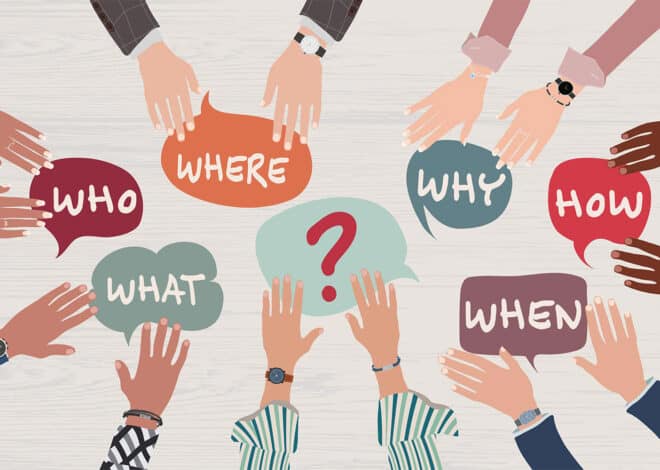Five Years and Growing: How One Nonprofit Built a Sustainable, Collaborative Mission
An executive director shares the story of a nonprofit’s first five years. A tale of hard work, experience, growing pains, and occasional heartbreak.

Practical steps your nonprofit can make now to propel your organization forward in making a positive impact in your community.
I’m about to give you and your nonprofit something priceless.
You’ll learn why you shouldn’t let barriers stand in the way of your vision, how to be creative about your streams of income, and the importance of being open to and intentional about collaboration.
As the executive director of the Maryland Reentry Resource Center (MDRRC), these are some of the lessons that I’ve learned through five years of hard work, experience, and occasional heartbreak. Please take from my experience and put it in use at your nonprofit.
Now, let’s start this introduction with a party.
This past May, the MDRRC celebrated our five-year anniversary with a fundraiser, intentionally entitled “Honoring the Past, Building the Future, Fundraising for Change.”
This title encapsulated our commitment to recognizing the experiences and struggles of individuals who have encountered the criminal justice system while also acknowledging the journey and challenges we’ve faced in establishing our nonprofit.
By honoring the past, we affirm our dedication to continue building a foundation rooted in empathy and understanding, both for those we serve and for our organization’s evolution. We also recognize the progress made thus far and the resilience demonstrated in overcoming obstacles.
Through our fundraising efforts, we provide not only immediate support and resources but also to create lasting change and opportunities for individuals reentering society.
More generally, this title represents our vision of empowerment, progress, and sustainable impact in the realm of reentry services.
How We Came to Be
As a University of Maryland Extension Educator, I found myself teaching a financial literacy and entrepreneurship class at the Maryland Correctional Institute for Women.
During that experience, I learned that prison is our most closed system: We don’t know what we can’t see. But more than that, I realized our criminal justice system was broken — and definitely did not serve the purpose of rehabilitation, which was what I originally assumed.
Despite downward trends in criminal activity, the United States still has the highest incarceration rate in the world. While number one in incarceration, we are failing at rehabilitation and preparation[KC1] — especially considering the lack of comprehensive reentry programs.
While there are some efforts in place, such as job training and substance abuse counseling, they often fall short in providing the necessary support for successful reintegration into society.
One major issue is the limited access to education and vocational training within prisons. Studies have consistently shown that inmates who participate in education programs are less likely to reoffend upon release. However, many prisons lack sufficient funding or resources to offer these programs.
Another issue is the stigma and barriers that formerly incarcerated individuals face when trying to find employment, housing, and support services after release.
Many employers are reluctant to hire individuals with criminal records, making it difficult for them to secure stable employment. Additionally, restrictive housing policies and zoning laws often prevent returning citizens from finding affordable housing in safe neighborhoods.
Furthermore, there is a lack of continuity of care and support for individuals transitioning from incarceration back into the community. Many incarcerated individuals are released without adequate access to healthcare, mental health treatment, or substance abuse support services, increasing their likelihood of relapse and reoffending.
After working with incarcerated women, I could not un-know what I discovered about our broken prison system. Thus, I launched Maryland Reentry Resource Center with the goal of supporting individuals impacted by the criminal justice system.
During the first year (2019), I was able to secure one grant through a collaboration with another (slightly older) organization to share a $15,000 grant.
Making Funders Work for Us
The following year (2020) once again illustrated two Americas, marked by a profound racial reckoning and a heightened awareness of the inequalities exacerbated by a global pandemic.
As a result, diversity, equity, and inclusion (DEI) emerged as a critical focal point for funders across various sectors, causing them to reassess their priorities.
Our organization benefited from those initial commitments as funding was less competitive during the pandemic. We were able to leverage this funding to not only increase our impact, but to access other funding that would have been out of our reach.
Throughout the last five years, our revenues have grown from $15,000 to $370,000. We have five employees, consistent and regular volunteers, a five-person advisory board, partner organizations to help serve the community, and employers who are ready and willing to provide second chance employment opportunities to our program participants.
From this budget, MDRRC provides individualized case management services to 35 individuals each month and spends more than $25,000 per year to support program participants with assistance in transportation, housing, food, identification, driver’s education, clothing, and other miscellaneous needs.
We also host a reentry resource fair that brings resource providers to one place. We’ve even created a reentry workbook that helps incarcerated individuals prepare for their return home and supports our other programs.
We provide life and technical skills training: Our stormwater maintenance certification, for example, helps participants access collaborative, ready-to-hire employers alongside providing technical training. We host support groups and even provide transitional housing. Like many nonprofits, our funders get a lot of programming for their money.
The Fall of DEI Support
Yet, after the initial focus and attention, this support has disappeared. Citing “uncertainty, sustainability, and program success,” individuals — who do not look like me, have not walked in my shoes, and have never spoken to the people we serve — have decided other programs represent safer bets.
Recently, for example, I was told by a female group of funders that they did not feel my initiative would be successful and therefore could not advance my application. I certainly wasn’t being judged on my potential (like men tend to be) — I wasn’t even being judged on proof of my abilities (like women tend to be). After all, these funders ignored the success of other initiatives that we had achieved throughout the last four years.
As an African American, female nonprofit founder, I feel it is my responsibility to address mass incarceration, a societal ill that affects more African Americans than any other demographic. Yet, being a part of that demographic exposes my organization to a funding gap that exists in the United States.
While African Americans contribute 25 percent more of their incomes to philanthropic initiatives than white people do, revenues received by African American-led organizations remain on average 24 percent smaller than our white-led counterparts. And for organizations led by African American women, we consistently receive less funding than those led by African American men or white women.
To be clear, the sudden drop-off in funding is not a situation that is unique to my organization. In fact, one might argue that such instances of so-called crisis funding represent part of the lifecycle of the funding gap itself.
African American-led organizations — especially those led by African American women — come to rely on this crisis funding, only to have the rug yanked out from under them. Organizations like mine are not being funded for sustainability. We are being given Band-Aids for gaping wounds and expected to somehow survive.
You Have to Have Money to Get Money
In addition to the funding gap (that is in no way ameliorated by crisis funding), many funders make it difficult for small nonprofits when they require us to spend the money first and request for reimbursement, which can take up to a month or more to receive1. Yet, operational costs for payroll, rent, and insurance do not wait for your funding to be received.
Each year, we are looking for new sources of funding without having any consistent funding or surpluses that we can rely upon as we transition to a new fiscal year.
Our recent fundraiser then encapsulated not just our organizational ethos, but also the broader challenges faced by smaller nonprofits in the philanthropic landscape.
Statistics indicate that smaller nonprofits, like ours, often struggle to secure funding compared to larger, more established organizations.
According to research by the Young, Black & Giving Back Institute, “most of the Black-led and Black-benefitting nonprofits […] operate on a budget of less than $500,000 a year, with a sizable portion operating with just $30,000 annually.”2
This disparity in funding highlights systemic barriers that hinder smaller organizations — particularly those led by people of color and marginalized communities — from accessing resources and support.
This phenomenon mirrors broader societal inequalities, such as disparities between small and large businesses. Just as smaller nonprofits face challenges competing with larger organizations for philanthropic dollars, small businesses often encounter obstacles in accessing capital and resources compared to their larger counterparts.
This reflects a wider pattern of economic inequity, where those with existing wealth and resources have greater opportunities for growth and success, perpetuating cycles of disadvantage for marginalized communities.
Moreover, the lack of access to generational wealth, particularly among people of color and African American women, exacerbates these challenges. Historical and ongoing systemic barriers — including racial discrimination in employment, housing, and lending practices — have limited the accumulation of wealth within these communities.
As a result, individuals and organizations lacking this financial foundation face heightened hurdles in securing funding and resources, further perpetuating economic and social disparities.
In light of these realities, our fundraiser’s title reflected not only our commitment to honoring the past experiences and struggles of those impacted by the criminal justice system but also our recognition of the broader societal context in which we operate.
Through our fundraising efforts, we will not only address the immediate needs of reentering individuals, but also challenge systemic inequalities and create opportunities for empowerment and change.
By amplifying the voices and experiences of marginalized communities, we strive to build a more equitable and inclusive philanthropic landscape, where organizations of all sizes and backgrounds have the resources and support to make a meaningful difference in society.
As such, I have focused our future on two solutions that should help shepherd our organization into a site of sustainability — not only ensuring our longevity as an organization, but also making sure our programming remains accessible to those who need it most for years to come.
Solution 1: Build a Board
As the founder of a young organization, I understand the challenges of securing consistent funding and ensuring long-term sustainability. While initially hesitant to share my vision with a board, I recognize the necessity of relinquishing some control to facilitate growth and stability.
In 2024, I took steps to address this by establishing an advisory board, which has been instrumental in developing a strategic plan for the organization.
This plan includes the creation of a social enterprise to generate revenue, a fundraising strategy to increase donations, and the eventual formation of a new board of directors. By leveraging the expertise and networks of our board members, we aim to secure operational funds for future stability, establish reserves for unforeseen challenges, and access higher levels of funding to support our ambitious vision of serving justice-impacted individuals.
Through collaboration and strategic planning, we are building a pathway to sustainable growth and impactful change. This pathway will include:
Strategic Direction: The board, along with the executive director, will set the strategic direction and goals of the organization, ensuring that our initiatives align with our mission and values. They will provide insight into emerging trends, best practices, and community needs to shape the organization’s agenda.
Governance and Oversight: The board will play a crucial role in governance, providing oversight to ensure that we operate ethically, transparently, and in compliance with relevant regulations and policies. This includes financial oversight, risk management, and accountability.
Expertise and Networks: Board members will be selected carefully, and they will bring diverse expertise, experiences, and networks to the table. They will provide connections to key stakeholders, community leaders, and resources to enhance our impact.
Resource Mobilization: The board will assist with fundraising efforts by leveraging their networks, advocating for financial support from donors, philanthropic organizations, and government agencies. They will also provide guidance on resource allocation and budgeting to maximize our effectiveness.
Advocacy and Influence: Board members will serve as advocates for the MDRRC by amplifying our message and advocating for policy changes or initiatives that advance our mission. They will leverage their influence and relationships to garner support from decision-makers and drive systemic change.
Evaluation and Continuous Improvement: The board will oversee the evaluation of the organization’s programs and initiatives, monitoring their impact and effectiveness. Based on these evaluations, they can provide feedback and recommendations for continuous improvement to ensure that the MDRRC remains responsive to community needs and achieves its objectives.
Solution 2: Create a Social Enterprise
With our efforts to create a social enterprise, the Maryland Reentry Resource Center is also embarking on a collaborative initiative focused on Chesapeake Bay restoration.
Partnering with for-profit companies in the environmental services sector, we are leveraging our unique position to address both environmental challenges and workforce development needs. More specifically, our strategy involves engaging as subcontractors on stormwater maintenance projects, where there is a growing demand for trained and certified individuals.
Through our reentry program, participants receive specialized training and certification, equipping them with the skills needed to contribute meaningfully to this field.
By employing a small crew of program participants, we not only provide valuable employment opportunities but also play a vital role in conserving and restoring the Chesapeake Bay ecosystem.
Of course, this innovative approach not only generates revenue for our organization, it also creates a positive impact on the environment and the lives of justice-impacted individuals.
With the guidance and support of our advisory board, we are strategically positioning ourselves to maximize both social and economic benefits through our social enterprise endeavors.
Sustainability Means Sharing My Vision
Sharing my vision embodies a pivotal shift necessary for Maryland Reentry Resource Center to fortify our mission and impact for the long haul.
While initially protective of the organization’s vision, I’ve come to realize that true sustainability lies in collaboration and delegation. After all, establishing a board and cultivating partnerships isn’t just about expanding support networks; it’s about broadening perspectives and harnessing the collective expertise necessary to drive meaningful change.
By inviting others to share in our vision, we’re not only fostering a sense of ownership and investment but also tapping into a wealth of knowledge and resources that can propel our organization forward.
As we embark on this journey, we’re embracing the transformative power of collaboration to amplify our impact and ensure the enduring success of our mission.
Sharing our vision isn’t just a strategic move; it’s a reflection of our commitment to inclusivity, innovation, and sustainable growth. Through collective effort and shared dedication, we’re not only building a brighter future for justice-impacted individuals and communities, but also laying the groundwork for a resilient and impactful organization that will continue to make a difference for generations to come.
Footnotes:
- For tips on how to better advocate for your small nonprofit to funders, check out this article! ↩︎
- While an article by Candid. implies that those surveyed reflect Black-led and Black-benefitting nonprofits at large, the YBGB research makes no such claim. In fact, it might be more critical to note that the 227 survey responses represent a small fraction of the nonprofits who were offered a chance to participate. It is not impossible that nonprofits with smaller operating budgets are more likely to participate in research in order to gain additional visibility. Despite this qualification, the disparity in terms of funding accessibility is still deeply entrenched within and inherent to the American nonprofit sector. ↩︎
About the Author
Vanessa Bright is a mom, educator, author, and entrepreneur.
In 2019, Vanessa started Maryland Reentry Resource Center with a desire to use her experience, resources, and expertise to empower formerly incarcerated individuals to become thriving and productive citizens in the communities to which they return.
Her inspiration is focused on upholding human dignity and creating opportunities that help individuals and organizations remove the social and financial barriers to success.
Vanessa is the author of several books, including Dollars and Cents for Parents and Children, Create Your Life Plan Now: Your Roadmap to Reentry, and The Greatest Story Ever Told, A Self-Guided Journal.
Vanessa holds a Master of Business Administration from Howard University and a Master of Social Work from Catholic University. She is also a Licensed Master Social Worker.
Articles on Blue Avocado do not provide legal representation or legal advice and should not be used as a substitute for advice or legal counsel. Blue Avocado provides space for the nonprofit sector to express new ideas. Views represented in Blue Avocado do not necessarily express the opinion of the publication or its publisher.












I commend you your work ,strength and vision for you growing organization and wish you continued success.
Your article is incredibly inspiring. As a founder and reentry service provider, your strategic changes have motivated me to persevere in my work. Thank you for being such an inspiration.